tomarnidhi
Well-known member
Faux wall covering let you break the limits of ordinary wall paint, creating surfaces that glisten in light or look like old-fashioned plaster, for example. And, increasingly, these kinds of jobs are within the reach of weekend warriors, not just expert contractors.
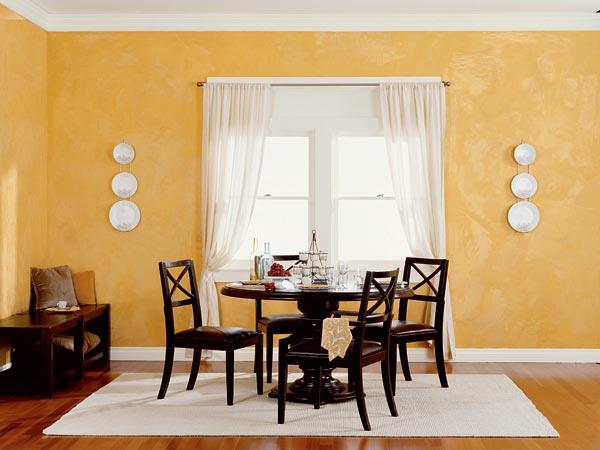
Venetian Plaster
Applying Venetian plaster used to be a time-consuming process requiring patience and skill, so the job was mostly limited to master artisans. Today, even a first-time DIYer can get impressive results. The covering mimics the look of the stucco or polished marble found in old-world European architecture. The modern version of Venetian plaster has a multidimensional look featuring a textured, slightly raised surface that is the result of two or more layers.
Venetian plaster is applied with a putty knife. Wipe the plaster on the wall at a 15- to 30-degree angle relative to the floor or ceiling. Once it's dry, apply a second coat at a 60- to 90-degree angle. An optional topcoat protects the surface. (Note: For Venetian plaster or any other of these coverings, you'll need to prep the walls the way you would for a paint job—tape off the trim, fix cracks, and fill nail holes.)
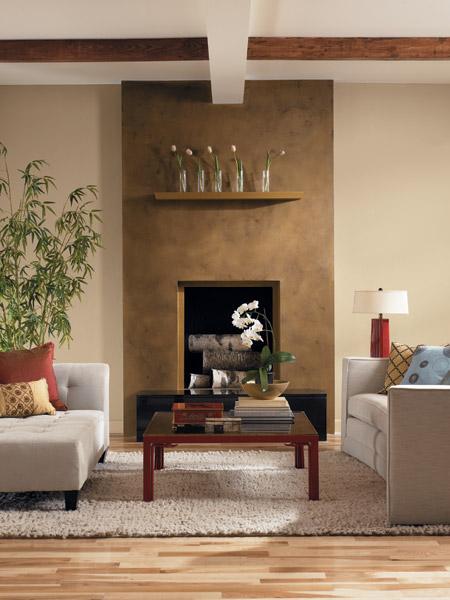
Artisan Finish
Here's another throwback to older European-style wall coverings. Artisan finishes can be used on drywall or wood to give the impression of marble or stone. What makes these finishes unusual is that the various shades and hues in the paint seem to change depending on the light that shines on the wall, so as the lighting changes it highlights different colors. The finishes can range from decorative to rustic to natural.
Artisan Impressions allows for three application techniques, each of which creates a different texture: crackle, leaf, and tissue paper. Crackle requires applying a glaze with a wooden stick. Leaf entails placing decorative leaves in the wet paint. Tissue paper requires you to place a sheet of tissue in the wet paint.
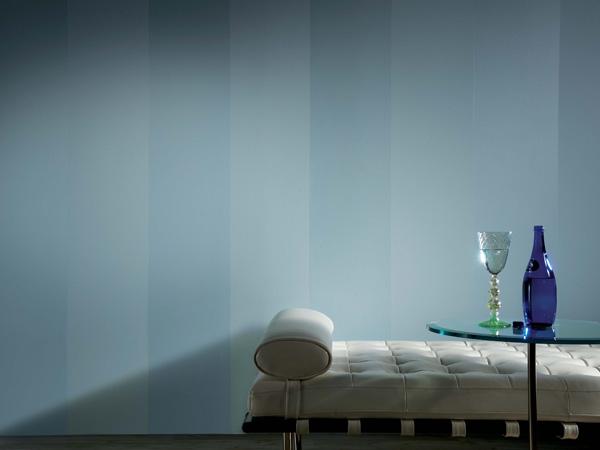
Metallic Paint
If you want to give your walls a shimmering look, a metallic paint or glaze is the way to go. The walls will sparkle when light hits it.
Metallic paints used to be hazardous and required solvents for cleanup, and were primarily used for automobile finishes. Now they're available with water-based cleanup, and they're safe and easy for DIYers to use in the homes.
Application starts with a base coat that a person rolls on and cuts in along the trim and corners, as with any paint. Then apply the metal paint with a roller, going from floor to ceiling, rolling in a continuous vertical motion to prevent lap marks.
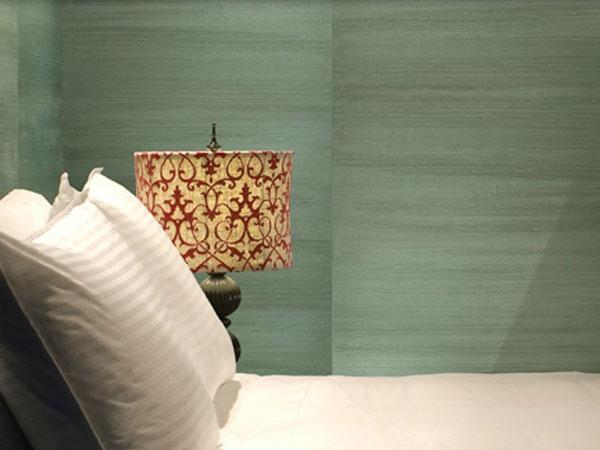
Metallic Plaster
Similar to metallic paint, metallic plaster is thicker and typically applied with a trowel instead of a roller. The plaster gives you more design options and a wide range of colors. It has a deep luster and offers the shimmering effect of having metal in the finish. The plaster is typically water-based, making cleanup easy.
Metallic Plaster contains a blend of glass spheres and pearlescent, and mica particles for a rich, deep color that shines. To begin, apply a base coat with a trowel in a broad, sweeping motion. Then apply the texture coat with a sponge miniroller, followed by a skim coat of the metallic plaster. The more contrast in color between the texture coat and skim coat, the more dramatic effect you'll have in the finished product.

Manda Mudd
Plaster finishes used to be the norm for interior walls, until the advent of less expensive and faster-to-apply drywall. But painted drywall lacks the handcrafted personality of plaster applied over lath. Applying plaster the old-fashioned way isn't an option for homes built in the past 50 years or so, because they weren't constructed with the lath in the walls. However, you can get the look in modern houses by using a faux plaster.
Manda Mudd offers a product it calls a premium plaster wall finish that gives walls a deep color and a three-dimensional texture. The company says its finish is designed for mistake-free application by DIYers. The first application goes onto the walls with a standard roller. The second layer goes on with a trowel to create color contrast and texture. A third and final layer goes on top, also applied via trowel.

Sandstone Finish
This paint's sandy texture gives it a granular appearance. The finish is slightly raised and somewhat gritty to the touch. This is one of the fastest, easiest, and least expensive textured finishes to apply. Application is the same as rolling on a traditional paint, and it's available in myriad colors.
Sandstone paint is typical of this finish. Paint the corners and along the trim with a brush, then roll on the finish with a 1/2- or 3/4-inch-nap roller. Once it's dry, put on a second coat. It's about as straightforward as decorative finishes get.

Texture Sand
At one time painters added silica sand to paint to give it texture; the tiny sand granules reflect light, giving the wall the appearance of depth. Today painters and DIYers can buy paint with the sand already incorporated.
The sand paint is rolled onto the wall. After it dries, you roll on your base-color paint and let it dry. Then you apply a second color that is different from the base color. This second color is mixed with a glaze, then applied using a cloth and wiping in a circular motion to cover the underlying color. The result is a textured, multidimensional finish.
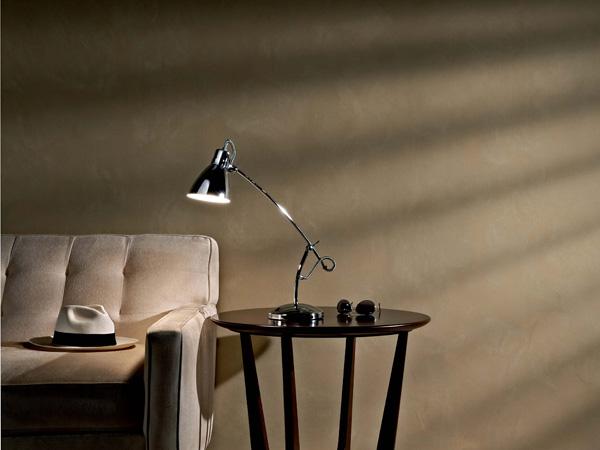
Brushed Suede
Giving a room the elegant, sophisticated look of suede is now possible with brushed-suede paint. The brushed suede is applied by rolling on a base coat with a 1/2-inch-nap roller, working in small sections at a time. Then, before the paint dries, roll the length of the wall from floor to ceiling to smooth out any lap marks. To finish, you use a wide brush to apply the paint on the wall in a continuous series of overlapping Xs to create variations in color tone. It's best to avoid this finish in high-traffic areas, however, because the delicate surface can scratch easily, and touchups are hard to blend into the surrounding paint.

Venetian Plaster
Applying Venetian plaster used to be a time-consuming process requiring patience and skill, so the job was mostly limited to master artisans. Today, even a first-time DIYer can get impressive results. The covering mimics the look of the stucco or polished marble found in old-world European architecture. The modern version of Venetian plaster has a multidimensional look featuring a textured, slightly raised surface that is the result of two or more layers.
Venetian plaster is applied with a putty knife. Wipe the plaster on the wall at a 15- to 30-degree angle relative to the floor or ceiling. Once it's dry, apply a second coat at a 60- to 90-degree angle. An optional topcoat protects the surface. (Note: For Venetian plaster or any other of these coverings, you'll need to prep the walls the way you would for a paint job—tape off the trim, fix cracks, and fill nail holes.)

Artisan Finish
Here's another throwback to older European-style wall coverings. Artisan finishes can be used on drywall or wood to give the impression of marble or stone. What makes these finishes unusual is that the various shades and hues in the paint seem to change depending on the light that shines on the wall, so as the lighting changes it highlights different colors. The finishes can range from decorative to rustic to natural.
Artisan Impressions allows for three application techniques, each of which creates a different texture: crackle, leaf, and tissue paper. Crackle requires applying a glaze with a wooden stick. Leaf entails placing decorative leaves in the wet paint. Tissue paper requires you to place a sheet of tissue in the wet paint.

Metallic Paint
If you want to give your walls a shimmering look, a metallic paint or glaze is the way to go. The walls will sparkle when light hits it.
Metallic paints used to be hazardous and required solvents for cleanup, and were primarily used for automobile finishes. Now they're available with water-based cleanup, and they're safe and easy for DIYers to use in the homes.
Application starts with a base coat that a person rolls on and cuts in along the trim and corners, as with any paint. Then apply the metal paint with a roller, going from floor to ceiling, rolling in a continuous vertical motion to prevent lap marks.

Metallic Plaster
Similar to metallic paint, metallic plaster is thicker and typically applied with a trowel instead of a roller. The plaster gives you more design options and a wide range of colors. It has a deep luster and offers the shimmering effect of having metal in the finish. The plaster is typically water-based, making cleanup easy.
Metallic Plaster contains a blend of glass spheres and pearlescent, and mica particles for a rich, deep color that shines. To begin, apply a base coat with a trowel in a broad, sweeping motion. Then apply the texture coat with a sponge miniroller, followed by a skim coat of the metallic plaster. The more contrast in color between the texture coat and skim coat, the more dramatic effect you'll have in the finished product.

Manda Mudd
Plaster finishes used to be the norm for interior walls, until the advent of less expensive and faster-to-apply drywall. But painted drywall lacks the handcrafted personality of plaster applied over lath. Applying plaster the old-fashioned way isn't an option for homes built in the past 50 years or so, because they weren't constructed with the lath in the walls. However, you can get the look in modern houses by using a faux plaster.
Manda Mudd offers a product it calls a premium plaster wall finish that gives walls a deep color and a three-dimensional texture. The company says its finish is designed for mistake-free application by DIYers. The first application goes onto the walls with a standard roller. The second layer goes on with a trowel to create color contrast and texture. A third and final layer goes on top, also applied via trowel.

Sandstone Finish
This paint's sandy texture gives it a granular appearance. The finish is slightly raised and somewhat gritty to the touch. This is one of the fastest, easiest, and least expensive textured finishes to apply. Application is the same as rolling on a traditional paint, and it's available in myriad colors.
Sandstone paint is typical of this finish. Paint the corners and along the trim with a brush, then roll on the finish with a 1/2- or 3/4-inch-nap roller. Once it's dry, put on a second coat. It's about as straightforward as decorative finishes get.

Texture Sand
At one time painters added silica sand to paint to give it texture; the tiny sand granules reflect light, giving the wall the appearance of depth. Today painters and DIYers can buy paint with the sand already incorporated.
The sand paint is rolled onto the wall. After it dries, you roll on your base-color paint and let it dry. Then you apply a second color that is different from the base color. This second color is mixed with a glaze, then applied using a cloth and wiping in a circular motion to cover the underlying color. The result is a textured, multidimensional finish.

Brushed Suede
Giving a room the elegant, sophisticated look of suede is now possible with brushed-suede paint. The brushed suede is applied by rolling on a base coat with a 1/2-inch-nap roller, working in small sections at a time. Then, before the paint dries, roll the length of the wall from floor to ceiling to smooth out any lap marks. To finish, you use a wide brush to apply the paint on the wall in a continuous series of overlapping Xs to create variations in color tone. It's best to avoid this finish in high-traffic areas, however, because the delicate surface can scratch easily, and touchups are hard to blend into the surrounding paint.


